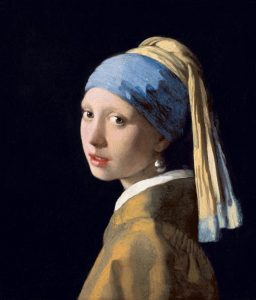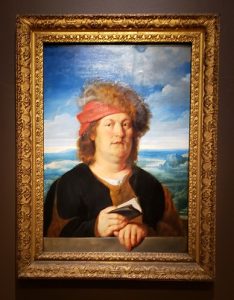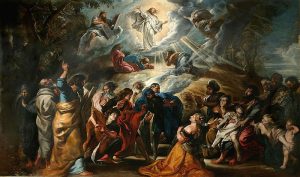What exactly is the Baroque style? Words like extravagant, ornate, unrestrained, extreme and excessive could be used to describe it.
This distinctive approach to art is certainly not limited to a few words, but those are a good beginning. Developing early during the 17th century, the baroque style was eventually applied to music, dance, architecture, sculpture and the other arts. A true cultural movement!
One may argue that it is through the media of painted art that the style is the most breathtaking. It is the use of high contrasts, rich colors, and depictions of human expressions that set this style apart.
Beginning in Rome as religious art, the baroque style soon flourished throughout all of Europe. This movement took place shortly after the Renaissance and continued to endure for the better part of 150 years. It can truly be said that the Baroque style took art to a whole new level.
There are quite a few artists connected to the Baroque movement whose names come to mind. There was Rembrandt van Rijn, the Dutch painter and printmaker. There was Gian Lorenzo Bernini, the Italian sculptor and architect who carved Apollo and Daphne in 1625. And there was Johannes Vermeer who famously painted Girl with a Pearl Earring in 1665. All were prominent Baroque artists, but the artist that was perhaps the most influential during this period is the master of expression, Sir Peter Paul Rubens.
Peter Paul Rubens
A classically educated scholar, Peter Paul Rubens (1577-1640) was also a good diplomat who was knighted by both King Charles I and Philip IV, making him a double Sir! He was a prolific artist who produced at least 1,500 paintings, most of which are masterpieces.
Also a printmaker, his etchings appear in many books and manuscripts of the time. Rubens painted everything from landscapes to portraits to altarpieces to mythological scenes. Of his many commissioned large pieces, most were biblically historical in nature. Because of this he became a leading painter of the Catholic Counter-Reformation movement claiming that his passion came from the heavens.
In 1600, at the age of 22, Rubens left Belgium for Italy. That journey would last for eight years. He would study, draw, paint and establish contacts in many Italian cities during this time. Part of his learning process was to copy and improve now lost works of the early Italian masters. These paintings are now as important as the lost originals.
Celebrated for his handling of oil paint, dramatic scenes and depictions of action, this artist knew how to awe his patrons and those who view his work. His talent for capturing movement and emotion was equal to that of Leonardo da Vinci whose work he greatly admired. At the time of their unveiling, Ruben’s paintings set a new threshold for art throughout Europe. He returned to his hometown of Antwerp in 1609 and set up a studio/shop that produced art for all of his local and foreign patrons.
If you happen to find yourself in or around San Francisco this summer, there is a marvelous exhibition titled, “Early Rubens” in Lincoln Park at the Legion of Honor Museum. The exhibition runs until Sept. 8 and focuses on Rubens most productive period, 1609 to about 1621.
To be able to stand in front of these massive 400-year-old works in their gilded frames is absolutely captivating. After viewing the show, my first question to the curator was, “How in the world did you move these?” Of course the answer was, “very carefully.” Still, it must have been a logistical nightmare. Some of these paintings measure almost twelve feet wide by ten feet high, and they somehow made their way from Europe to San Francisco just for this exhibition.
While there, please be sure to spend some time in the rest of the museum. At the Legion of Honor you can enjoy a very impressive permanent collection of everything from ancient Egyptian artifacts to carved period furniture.
Sal Maccarone is a foothills-based artist and craftsman
Read more about How Art Shapes Our Lives.






